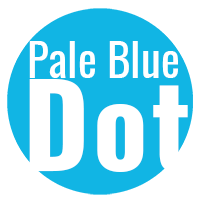This week, we’re going to take a look at one of the most frustrating aspects of charitable giving. To put it simply, giving away your hard-earned money is harder than you think. Don’t get me wrong. You can contribute ten dollars or ten thousand dollars before lunch, and there are a proliferation of new technologies to make that transaction fast and efficient. If you want to make sure that those dollars are spent wisely on a charity that will apply those funds effectively on the cause that matters most to you… it gets a lot harder.
Not all charities are created equal.
According to Canadian Charity Law, there are currently in excess of 85,800 registered charities in Canada. They offer a handy service (charitydata.ca) that will allow you to search for a charity to confirm their type, business registration number, category, financials, directors, staffing and more. Great! So as long as the charity you’re interested in turns up on the list, everything’s okay, right?
Unfortunately, the answer to that is no. Sadly, the charitable giving landscape contains some organizations that engage in bad actions intentionally (scams, tax evasion schemes, fraudulent receipting, improper fundraising, or abuse of their beneficiaries) or unintentionally (ineffective, inefficient, unfocused, or unsuccessful strategies that waste your hard-earned donations).
Great. So now what?
The good news is that there are charity watchdogs. These are organizations who attempt to assess the effectiveness of various charities, and give you some kind of rating system, to help you pick the “right” charity, so you can create the largest possible impact with your donation.
- Charity Intelligence Canada is the most popular and only Canadian-based watchdog. The CIC posts free reports on more than 750 Canadian charities, as well as in-depth primers on philanthropic sectors like Canada’s environment, cancer, and homelessness. They are working to encourage this sector to be more transparent, accountable and focused on results. They have a zero to four star rating system that is built based on these criteria:
- 40% results reporting: charity’s grade on the quality of its reports, its social results reporting;
- 20% financial transparency: audited financial statements provided;
- 20% need for funding: cash and investments relative to what it cost to run charity programs for 1 year, called “program cost coverage”; and
- 20% cost efficiency: 15% for fundraising costs and 5% for administrative overhead (within a reasonable range of 5%-35% for total overhead).
- MoneySense publishes an annual Top 100 Charities in Canada list. Although significantly less detailed than Charity Intelligence, MoneySense focuses on two main criteria, an organization’s financial situation and its overall transparency.
- Imagine Canada doesn’t rate charities, but it does offer an accreditation program to show that the accredited organization can demonstrate excellence and leadership in five key areas of operation:
- Board governance;
- Financial accountability and transparency;
- Fundraising;
- Staff management; and
- Volunteer involvement.
- WelFact is a donation platform that also uses a charity’s audited financial statements, tax forms, website, and Canada Revenue Agency (CRA) profile to evaluate four key elements:
- Efficiency;
- Need for funding;
- Reputation; and
- Transparency.
- CharityWatch is an American organization whose analysts perform in-depth evaluations of complex charity financial reporting, including audited financial statements, tax forms, annual reports, state filings, and other documents. They perform two end calculations and assign the charity a letter grade efficiency rating on an A+ to F scale. The calculations are:
- Program %, which reflects the percent of total expenses a charity spent on its programs in the year analyzed. For example, a Program % of 80% means that the charity spent 80% of its expenses on charitable programs. The remaining 20% was spent on overhead, which includes fundraising, and management & general; and
- Cost to Raise $100, which reflects how much it cost the charity to bring in each $100 of cash donations from the public in the year analyzed. For example, a Cost to Raise $100 of $20 means that the charity spent $20 on fundraising for each $100 of cash donations it received.
- GiveWell searches for the charities that can save or improve lives the most per dollar donated.
- Evidence of effectiveness;
- Cost effectiveness (cost per benefit delivered);
- Room for more funding (what will additional funds enable and what is the value of those activities); and
- Transparency.
- Charity Navigator is an American group that uses a two-dimensional rating system where the overall score is not a sum but rather a measurement of the distance of two component scores from a perfect score of 100 and 100. The smaller the distance to the perfect score, the better the overall score. The two components are:
- Financial Health: performance in seven key areas, which assess its financial efficiency and capacity, in relation to the charity’s cause area; and
- Accountability & Transparency: seventeen different metrics, which assess whether the charity follows best practices of governance and ethics, and whether the charity makes it easy for donors to find critical information about the organization.
- BBB Wise Giving Alliance does not rate charities. It produces reports about national charities, evaluating them against comprehensive standards:
- Governance and oversight: does the charity meet the BBB’s standards to ensure that the volunteer board is active, independent and free of self-dealing;
- Effectiveness: does the organization have defined, measurable goals and objectives in place and a defined process in place to evaluate the success and impact of its program(s) in fulfilling the goals and objectives of the organization and that also identifies ways to address any deficiencies;
- Finances: does the charity spend its funds honestly, prudently and in accordance with statements made in fund raising appeals?; and
- Fund raising and informational materials: are the charity’s representations to the public accurate, complete and respectful?
I just looked up my favourite charity in a few of those watchdogs, and I’m more confused than ever
You and me, both. I’m sorry. I wish that there was a magic wand I could wave to sort it out for you, but I can’t.
I want to start out with this: each of those watchdogs really is trying to help you. They’re trying to come up with the perfect algorithm that will signal an effective, moral, and legal charity. Unfortunately, much like trying to pick the perfect investment, there’s no tool that spits out winning answers every time you push the button. GiveWell has a fantastic page where they chronicle their own mistakes in trying to rate charities. This helps make it clear how very difficult it is to assess charitable giving organizations
The ratio of money spent on the cause isn’t a magic bullet, as there are number of ways to determine how the costs are categorized, and depending on what each one emphasizes, it can make good charities look bad, or bad charities look good. More importantly, it doesn’t really help you differentiate between good and great charities.
How much the charity needs your money isn’t a simple criteria, either. Some are well-supported through massive endowments and they don’t really need your money that badly. They might not even be spending that much of their assets right now, and might sit on it for years. Some need your funding desperately, and will put your cash to work right away… or they might have financial management challenges that will interfere with their long-term sustainability.
One of my favourite charities is staffed almost entirely by employees, and another is 80% staffed by volunteers. The volunteer one is cheaper to operate, and therefore more effective, right? Yes… and at the same time, no. While volunteers can be wonderful, but certain work needs to be done by professionals.
Transparency, then… that should be an easy thing for us to agree on. Most Canadian charities have income under $100,000 per year. If it can cost anywhere from two to five thousand dollars to get their financial statement audited, then some of the smallest charities could be spending as must as half of their income on accounting fees. That doesn’t make sense.
Where to from here?
My advice is to explore the charity watchdogs, take what you can from them, but don’t let them do the thinking for you. You’re going to need to do your own homework. Regardless of the ratings and assessments provided by the organizations about, there isn’t always an alternative charity that serves the cause that you are passionate about.
If a tax credit is important to you, do the basic homework and ensure that the charity a registered charity under the Income Tax Act in Canada. This means that you can see the T3010 annual returns and they can issue tax receipts for appropriate donations.
The Canadian Donor’s Guide is the annual reference book for donors and their advisors containing data on charities collected by questionnaire as well as pertinent editorial content. No other publication contains this breadth of information on charities in Canada. This is the only authoritative directory to fundraising organizations in Canada, complete with an expanded editorial section. Print and digital versions are available.
Think about who you are, and how well the charity aligns to your world view. Do you prefer a charity with an international, Canadian, or local focus? Where do you want to see the charity’s impact: do you need to see it in person, or are you content with hearing about it second-hand? Do you prefer small charities, or large ones? Each has its strengths and its challenges. Do you know anyone who works or volunteers in that field? Ask their opinions about what works and what does not, and then compare that to the charity’s approach. Do you want to touch a large number of people for a short while, or fewer people for a longer time?
Explore how the charity works. How does it interact with donors, with people in the supply chain, with local authorities? What kind of leadership style do they have? Is their interaction model consistent with your values?
In short… GET PERSONAL. Ask questions. Talk to people who work for the charity, who volunteer with it, and who are helped by it. You worked hard for your money, and you should feel comfortable knowing that the charity you are supporting is not just doing the kind of work you value, but that they are doing it in a way that makes you feel comfortable. This research will not only help you pick the right charities to invest in: it will significantly increase the sense of connection and satisfaction you gain from working with each charity.


Leave a Reply